Ansell is a global supplier of personal protection (PPE) equipment solutions designed for workers in a wide range of industries. Ansell's customers include businesses engaged in the Manufacturing, Agriculture, Healthcare and Scientific sectors, as well as many other business sectors. Ansell has developed a global presence that includes sales, operations and manufacturing sites in North America, Latin America, Europe and Asia and employs more than 15,000 people worldwide. Ansell's position as a market leader has evolved over more than 100 years of history and can be attributed to our history of providing innovative protection solutions to workers through a deep understanding of the worker experience.
The criteria described here will help you to assess and determine for yourself how long you can use your chemical protective glove.

The protection provided by a chemical glove will always be limited. Time constraints are the most important limitations related to the use of a chemical protective glove. How long does my glove protect me? How long can I wear it? Can I reuse it after it has been exposed to a chemical? Those questions are essential to establish if you are going to be protected or not from the chemicals you’re using.
However, finding answers to those questions can be a tortuous process, since defining and perceiving which parameters to take into account often proves to be complex. The criteria described hereunder will help you to assess and determine for yourself how long you can use your chemical protective glove.
A CHEMICAL GLOVE WILL ONLY PROVIDE A LIMITED PROTECTION AGAINST THE CHEMICALS YOU ARE USING – TIME CONSTRAINTS ARE THE MOST IMPORTANT LIMITATIONS.
PROPERTIES OF CHEMICALS
The wearing time of a chemical protective glove will depend on:
THE NATURE OF THE USED CHEMICALS
Chemicals possess inner properties that will determine how quickly they will pass through the glove materials. For example, a viscous chemical will pass through a glove more slowly than a fully liquid one. On the other hand, a solid chemical will be assumed to stick to the surface of a chemical protective glove but not permeate through it.
Furthermore, each glove material will behave differently depending on the chemical: a specific material can provide no protection at all from one chemical but could be the most appropriate material against another chemical.
EACH GLOVE MATERIAL WILL BEHAVE DIFFERENTLY – DEPENDING ON THE CHEMICAL.
Several standards (such as the European one, called EN374, or the American one, called ASTM F739) were developed to assess the chemical resistance of gloves: each standard assesses the time necessary for a chemical to pass through a material. Such time is referred as the “permeation breakthrough time” of a chemical through the glove. The longer the permeation time is, the better protection you will have.
THE LONGER THE PERMEATION TIME IS, THE BETTER PROTECTION YOU WILL HAVE.
Ansell Chemical GuardianTM was created to simplify the chemical glove selection process for your unique set of chemicals. This system currently contains permeation time information of around 4500 single chemicals and 1000 chemical mixtures. It offers you a personalized glove assessment with expected permeation times, which will facilitate your glove selection.
BY PROVIDING THOROUGH AND DETAILED PERMEATION TIME INFORMATION, ANSELL CHEMICAL GUARDIANTM IS THE PERFECT TOOL TO EASILY SELECT THE RIGHT CHEMICAL PROTECTIVE GLOVE.
ON-SITE USE OF PROTECTIVE GLOVES
THE CONDITIONS OF USE
Please note however that the permeation times are theoretical values which correspond either to estimations or laboratory test results. They do not take into account your conditions of use. For example, a chemical will pass more quickly through the glove material if it is heated, meaning that the practical permeation time will be lower than the theoretical one. Mechanical factors (such as stretching of the glove) can also theoretically influence and reduce the time necessary for the chemical to permeate through the material.
Therefore, a permeation time does not necessarily correspond to the wearing time of a glove. A permeation time will only give you an indication concerning the maximum time you can use the glove if it were in continuous contact with the chemical and this value does not consider your precise conditions of use. An evaluation of the wearing time should be performed case by case, while considering the different factors that could influence your protection.
Before selecting a glove, do not hesitate to test this glove in practice in your application to determine the timeframe during which you can use it. During this test, inspect the glove visually to check for any degradation signs and to verify if the chemical does not pass through the glove material too quickly.
AN EVALUATION OF THE WEARING TIME OF A CHEMICAL PROTECTIVE GLOVE SHOULD BE PERFORMED CASE BY CASE AND CORRESPOND TO REAL ON-SITE CONDITIONS
CAN I REUSE MY CHEMICAL PROTECTIVE GLOVE?
The decision to reuse a glove is always a tricky one, since the glove you want to use has already been put in contact with a chemical a first time. It is therefore possible that the used glove can no longer provide the same protection as when it was new. Indeed, after its first usage, the chemical remains on the glove and can keep on permeating through the material. This means that the chemical can be present inside the glove when you try to reuse the glove for a second time. This is the reason why we usually recommend to avoid reusing gloves whenever possible.
However, due to practical reasons, end-users would often like to reuse gloves. This decision can be taken but only with extreme precautions. Always consider the total time during which your glove is going to be in contact with your chemical, from the moment you start using the glove for the first time till the last moment you are going to use it (while also taking into account the time during which the glove is not used). Compare this total time to the theoretical permeation time:
- If the total usage time is longer than the permeation time, avoid reusing the glove. A new glove should be used instead.
- If the total usage time is shorter than the permeation time, a case-by-case assessment should be performed, while considering your conditions of use.
Regardless of the permeation time and the usage time, always inspect the glove visually before reusing it. If signs of degradation can be seen, avoid reusing the glove – this indeed means that the inner properties of the gloves have been altered due to the first contact with the chemical.
After the glove has been used a first time, a rinsing procedure of the outside of the glove can also be considered. Please note that this rinsing procedure will not guarantee that the chemical will completely be rinsed off the glove – some of the chemical can indeed still remain on the glove and permeate through the material. However, the rinsing procedure can slightly reduce the risks of a continuous permeation during the period when the glove is not used.
- Chemical protective gloves except for polyvinyl alcohol (PVA) gloves can be rinsed abundantly with water on the outside.
- Since PVA gloves degrade in contact with water and alcohols, other solvents should be used for the rinsing procedure, such as mineral spirits, kerosene, xylene, perchloroethylene or methylene chloride.
Regardless of if it has been rinsed or not, always inspect the glove before reusing it.

Example 1 of degraded glove.
Bi-ColourTM in contact with sulphuric acid 98% for 5 min. Discoloration of the glove can be seen, which means that this glove will not provide the same chemical protection anymore.

Example 2 of degraded glove.
A Solvex® dipped in acetone for 3 hours (on the right) when compared to a Solvex that wasn’t put in contact with any chemical (on the left). An elongation of the glove can be seen when it has been dipped in acetone, which is a sign of degradation.
HOW LONG CAN I USE A DISPOSABLE GLOVE?
Disposable gloves are used to protect the end-user from an occasional splash of chemical, typically in a laboratory environment. Indeed, laboratory workers use a lot of different chemicals but also need a good dexterity to handle fine equipment. Therefore, a thin glove must almost always be used in those kinds of environments.
There is only one correct way to work safely with disposable gloves: once a splash of chemical has landed on the disposable glove, the user has to throw away the used glove and replace it right away. This remark is valid regardless of the chemical. Therefore, due to their low thickness, disposable gloves will only provide a protection against occasional splashes of chemicals or for short contact with them. If a longer protection is needed, a non-disposable glove should be preferred. However, it sometimes happens that a worker doesn’t have any other choice than to work with disposable gloves for a longer time, even if the glove was splashed. This typically happens when a good dexterity level is needed for the whole duration of the work. To avoid any protection problem, the worker can always use the Barrier® glove as an underglove and then put a disposable glove over the Barrier glove. This way, both the protection and the dexterity levels will be optimal.
Brought To You By

More from Ansell
More on Workplace Safety
Flammable liquids and gases must be stored and handled safely to minimize fire risk. Here’s a primer for protecting your business.
An arc flash is hotter than the sun and can send shrapnel flying faster than a jet. And while thousands of people may experience arc flash burns each year, many manufacturers are unprepared for an incident. Learn how to prepare your workplace—and protect your employees—from a blast.
Some electrical safety myths and misconceptions could be putting your workers at risk unnecessarily. An expert from Oberon shares three truths about arc flash rescue devices, PPE and incident energy reviews.

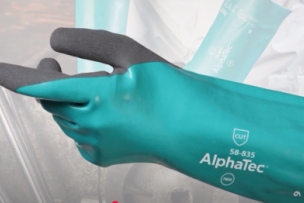
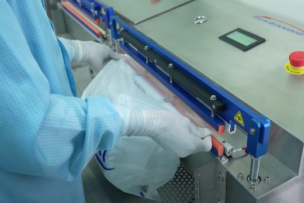
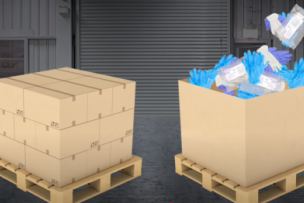
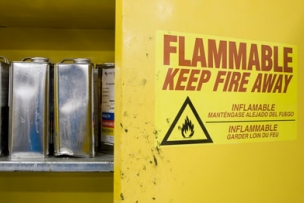

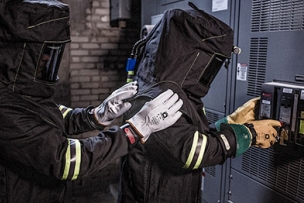
Talk to Us!
Leave a reply
Your email address will not be published. Required fields are marked *